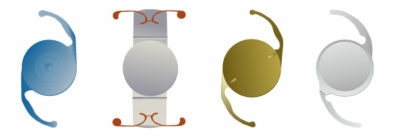Do you have cataracts? You may have already started considering what kind of lens you should have during cataract surgery.
Having any kind of surgery, major or minor, can be a pretty big decision. When it comes to cataracts, the only way to treat them is by having cataract surgery.
The good thing about cataract surgery? It will restore any vision loss you may have already suffered. For patients who have advanced cataracts, cataract surgery is almost always the best option.
But the decision to get cataract surgery isn’t the only decision you’ll have to make. When you have cataract surgery, you’ll have your eye’s natural lens replaced with an intraocular lens or IOL.
IOLs come in different varieties. All but the standard monofocal IOLs are considered premium. How do you know if you should get a premium IOL, and how do you choose which kind of premium IOL to get?
There are a few things you need to know before you make a choice. Keep reading to find out if premium lenses could be right for you!
Cataract Surgery and IOLs
Cataract surgery is a procedure that involves removing your natural lens and the cataract that’s formed on the lens. Before modern cataract surgery, this meant patients who had cataract surgery were left with no lens in their eyes.

If they wanted to see at all, they had to use thick glasses. But thanks to modern medical technology, patients can now see better than ever after cataract surgery.
How? The natural lens is now replaced with an artificial lens during cataract surgery.
The artificial lens, also known as an intraocular lens or IOL, provides you with clear vision and corrects refractive errors. This means if you’re nearsighted, farsighted, or have astigmatism, these are things a premium IOL can fix.
Standard vs. Premium IOLs
There is one kind of standard IOL, and it’s called a monofocal lens. A monofocal lens means that the lens is uniform and set to either allow you to see up close or far away, depending on the prescription.
Patients who choose a monofocal lens may get one lens set to see up close and the other one set to see at a distance. This combination allows for something called monovision.
Monovision allows you to see pretty well at most distances. However, patients sometimes need reading glasses to see up close, especially if they have presbyopia.
Presbyopia is an age-related condition that makes it hard to see up close. It is common in cataract patients as cataracts are similarly linked to age.
But monofocals aren’t the only option. There are premium lenses that can do more to correct presbyopia and even other refractive errors like astigmatism.
These lenses tend to cost more, as standard monofocal lenses are usually covered by insurance with surgery price. It’s important to know that premium IOLs are not.
Although this means that you have to pay for premium IOLs out of pocket, most patients find them to be worth every penny!
Premium IOL Varieties
Premium IOLs come in several varieties, although not every ophthalmologist will offer every kind of IOL. Some offer more advanced IOLs than others.
But there are a few options that are more popular than others. These are the ones that you’re most likely to find at most eyecare practices.

Multifocal IOLs
These are lenses divided into rings that come outward from the center of the lens. The different rings alternate between two refractive powers.
One power is set to focus up close, and the other power is set to see at a distance. Wearing multifocal lenses trains your eyes to look through the right part of the lens, depending on what you’re looking at.
This allows for sharper up-close vision, often doing away with the need for reading glasses.
Trifocal IOLs
Trifocal IOLs are like multifocal lenses in some ways, but they differ in other ways. They are similar because the trifocal lens is composed of alternating segments.
But where they differ is instead of switching between two refractive powers, they switch between three powers. One is to see up close, one is for seeing at a distance, and one is to see at an intermediate distance.
This allows for sharp vision at all distances. There is no gap in sight, which can be the case with some multifocal lenses.
Accommodative IOLs
With this kind of premium IOL, they change shape depending on what you’re looking at. When you focus on something up close, they become thicker to magnify whatever you’re looking at.
This allows for excellent vision up close and good sight at a distance. Some patients find their vision isn’t as sharp up-close as with multifocal or trifocal lenses.
Toric IOLs
This is the only kind of IOL that’s specifically designed to correct astigmatism. They’re best for patients with slight astigmatism. They can’t correct severe astigmatism.
A toric IOL may also be paired with limbal relaxing incisions (LRI). These incisions can be added during cataract surgery to correct astigmatism by slightly changing the eye’s shape.
Determining the Best IOL for You
When choosing an IOL, you should always consult your eye doctor and discuss what they have available and what they think are your best options. But the decision is ultimately up to you, and there are several things to consider.
You need to ask yourself what you want to get out of cataract surgery. Is having your cataracts removed and your vision mostly corrected enough for you?

Or do you want to see even better with a premium lens? Is the price of a premium lens worth the visual improvement? Do you want to correct your astigmatism?
Another thing to consider is what you spend most of your time doing. Do you spend a lot of time working in front of a computer?
Your best options are monofocal or trifocal lenses, as they allow you to see well at a middle distance. Multifocals can tempt you to sit too close to the screen, causing eye fatigue and computer vision syndrome. Keep that in mind as well when making your decision.
Your eye doctor can help you decide and make recommendations about IOLs, but it’s good to have an idea about what you want when you go in and see what the options are. Whatever you choose, you’re virtually guaranteed to have much better vision with IOLs and without pesky cataracts!
Ready to find out if you should have cataract surgery sooner than later? Schedule a cataract screening at Sugiki Portis Yim Eye Center in Honolulu, HI, today! Don’t let cataracts hold you back any longer from the clear vision you desire!





